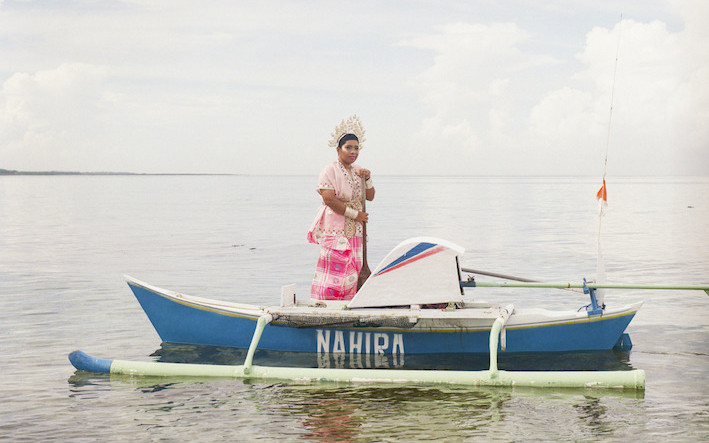Josa Lukman (The Jakarta Post)
Jakarta ●
Fri, September 25, 2020
A new web series is seeking to explore the meaning of beauty for Indonesian women.
Beauty is in the eye of the beholder, as the saying goes. True beauty lies within, says another.
Of course, beauty is ultimately subjective, yet a vast industry centered around a preconceived notion of “beauty” is proof enough that beauty standards are all around us.
To seek the meaning of beauty is perhaps an unending journey, where each path will yield a different answer; one that is deeply personal.
Recognizing these various viewpoints, Indonesia Kaya’s latest web series aims to highlight these different answers, all the while telling the stories of a wide array of Indonesian women from differing backgrounds.
Paras Cantik Indonesia (Indonesia’s Face of Beauty), as the series is called, takes the form of a documentary profiling 12 Indonesian women and their own ideas of beauty.
Each episode sees doctor, singer and host Teuku Adifitrian – popularly known as Tompi – interviewing the central figure of the episode about her life as she undergoes a makeover process for an analogue photoshoot, with Tompi as the photographer.
Desert dance: An artist and researcher from Yogyakarta, Sekar Sari is the star of the web series’ second episode. (Image Dynamics/-)
Done in collaboration with Visinema Content, the series premiered on Sept. 8 on Indonesia Kaya’s YouTube channel, with new episodes launching every two weeks.
Nine episodes have been filmed so far, with the remaining three to be produced according to the ongoing situation regarding large-scale social restrictions.
Paras Cantik Indonesia opens with the story of Nurlina, a fisher hailing from Sabanko Island, South Sulawesi.
Living in a male-dominated society, Nurlina’s career is not one she dreamed of, but something that she needed to take on to make a living for herself and her mother.
When Nurlina’s father passed away when she was 12, she began setting out to sea, fresh out of primary school.
While fishing in Indonesia is mainly done by men, Nurlina said that she had no problem with working the nets, though she often bristles in frustration when her neighbors make comments on her so-called masculine appearance, calling her bencong (Indonesian slur for transwomen).
Still, many of the women look up to her and wish to follow her footsteps, something that makes her proud to be a fisher despite the myriad of obstacles.
On the subject of beauty and the products associated with it, Nurlina feels that beauty takes a backseat when more pressing matters are at hand.
“Many of my friends asked me why I don’t use skincare products, as my skin has gotten dark. I reply to them, ‘What is the use of beautiful skin when you have no money to buy sugar? Let my skin be dark, but my wallet thick’,” she said.
“For me, the definition of beauty is wide-ranging. Look at me – I feel beautiful, for me, for others, and as a fisherwoman.”
In a virtual press conference aired after the media premiere, Indonesia Kaya program director Renitasari Adrian said that the project had been two years in the making, along with a departure from their usual projects centered on Indonesian culture.
“The idea when meeting with Tompi was for him to photograph Indonesian women in various provinces, as they have their own unique characteristics. For example, the idea of beauty for the Javanese might be different than those hailing from eastern Indonesia,” she explained.
However, Renitasari admitted that both of them felt the idea to be too ordinary, and when the photos came in, they felt that they could do more.
“We wanted to highlight the entire package – beauty inside and outside. It’s not just the physical beauty, but also what they have done for their community. This in turn creates self-confidence, and that inner beauty is what Tompi would capture.”
As for the women profiled in the series, Renitasari noted that they were chosen based on what they did and their uniqueness, with backgrounds ranging from urban farmers to a member of the Army’s Special Forces (Kopassus).
“There is no one criteria that the figure must have met. What we look for is someone who hasn’t been covered by the media, from nobody to somebody. We also want to feature women who go against the stereotype that beauty has to be physical.”
Meanwhile, Tompi noted that the project forced him to take a deep look at his life based on the women he interviewed and photographed.
“I have many professions and have done many things in life for myself, but they are nothing compared to the amazing women in this project. It’s as if they have given me a huge wake-up call – what have I done for others in my life?” he said.
“Every time I return home, I always think about what I can do for the community around me. Everyone involved in the project has helped to create a learning experience for me that life should always be fruitful – not just for yourself, but also in how much we can do for others around us.”
